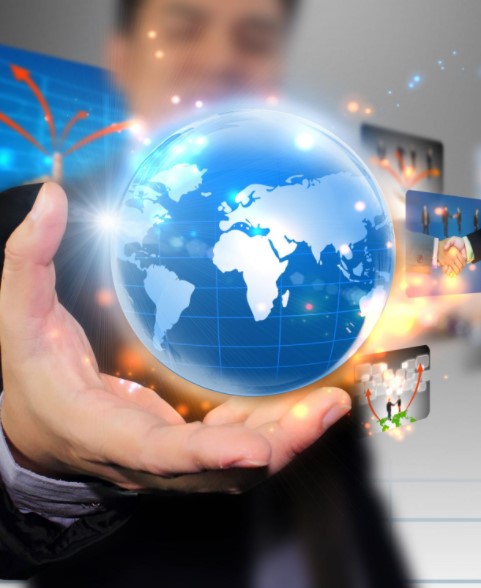Today we live in a globalised, international marketplace. Thanks to the internet, you can jump onto a computer – or your smartphone – and converse, trade, and connect with almost anyone on the planet. Timezone differences considered, a business leader in Shanghai can jump on a conference call with a colleague in London, then set up a business deal in Johannesburg, before finishing the day looking at future plans in Bogota. And all without leaving the office (or the home!). The same applies to leisure time as well – we can chat with a friend who lives in the US before buying a gift from China for another friend who lives in, say, Paris. All these connections are now almost immediate and instant.

The sheer number of people now using the internet is mind-boggling – some 4.65 billion people – or almost 60% of the world’s population. Those 4.65 billion people spend an average of 6 hours and 55 minutes on the internet every day (whether for business or pleasure) and they collectively make 89,000 searches on Google every second, each of which could take them to any one of 1.8 billion websites out there (those stats are all here).
92.6% of those 4.65 billion access the internet via mobile devices. And in developing countries, where a smartphone is often the cheapest and most accessible internet-enabled device, people are more likely to own a smartphone than they are a laptop or computer.
Some mind-boggling numbers right? Think about the potential in each of the interactions each person makes online each day. Whilst certain face-to-face activities will never fade away – no amount of social media can replace a good conversation with a friend – people are fundamentally relying on the online world to handle many of their basic day-to-day interactions.
Shopping is one of the areas that has felt this shift most keenly. Retail sales made online have shifted hugely in the past year. The coronavirus pandemic may have forced the bulk of the retail sector to the online world, but what’s remarkable is the sheer, explosive growth of eCommerce in the past year. After steadily growing for much of the past decade, the eCommerce industry has suddenly seen five years of growth in one year. And while the post-pandemic shift back to something approaching normality may see brick-and-mortar stores make a welcome return, it’s unlikely it will return to the same degree as before.
This opens up retailers and marketers to a potentially global audience, where your customers are as likely to come from Jakarta as from Jersey.
So how do you break through to that audience? To go global, you need to think global. And that starts with languages – building a business that’s going to be understood by your target audience. Here at Jonckers, we understand your full content needs from persona to pipeline. Our knowledge of the global marketplace has seen us help plenty of business to go global – and it’s something we can help you with too.
Next time, we’ll take a further look at what it means to go global.
Upload your documents to WordsOnline and pay online for a fast, simple service. 10% discount on your first order
We will help you transition to the new world of continuous localization!